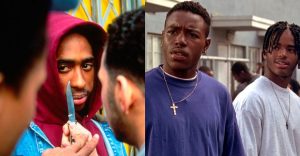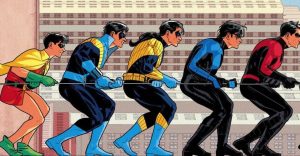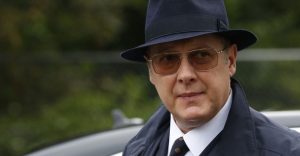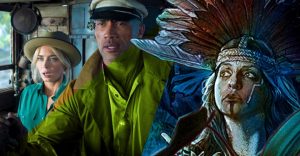Joker: 10 Best Comic Issues of the 1960s

Over the years, The Joker went from murderous to goofy to a straight criminal with a humor gimmick, then back to a killer clown, then to an insane killer clown. Moreso than his later incarnations, the Joker of the ’60s has much more in common with other Batman villains such as The Riddler, using humor as a theme to base his crimes around. He laughs a lot, but otherwise he comes off nearly as sane as anyone else.
Leaving the killer behind might have helped the long life of the character, as a dark, murderous Joker might not have survived the comic book purge of the late ’40s and early ’50s. Just as giving Batman a sidekick and toning back his darkness helped the character achieve a higher level of popularity, the Joker was able to last the decades going from dark to light and back to dark.
10 Detective Comics #332: “The Joker’s Last Laugh” – October 1964

Even after 80 years, fans know very little about the Joker except that he loves to laugh and use that love for crime. The Joker of the ’60s would literally tells bad jokes before his robberies, forcing people to laugh at them. Then he’d complete the crime with another gimmick based on the joke he just told.
In this issue, Joker traps Batman and Robin in a cell with a revolving door, and they escape when Batman whittles a key. Joker also uses a gimmick inside of a gimmick to pull his robberies, with jokes like “Why did the chicken cross the road?” leading to his escape on a giant chicken. This 1964 story is typical of the ’60s Joker, coming just after the “New Look” Detective Comics reboot but before the influence of the 1966 TV series.
9 Detective Comics #388: “Public Luna-Tic Number One” – June 1969

Batman and Robin catch up to Joker and his gang robbing equipment from a planetarium. The Joker also steals an experimental anti-gravity device from a lab. The gang later jumps Batman and Robin, knocking them unconscious. They awake in spacesuits on the moon. Batman quickly deduces it was a ruse using the stolen equipment and the Joker is captured.
In this issue, the Joker is committing “weightless crimes,” training his men to move in zero gravity to evade capture. As with most supervillain schemes of the time, readers had to wonder how well thought-through this silly concept was. The Joker is still his zany, Silver Age self in this 1969 issue, but the ’70s, and change, are on the horizon.
8 Batman #186: “The Joker’s Original Robberies” – November 1966

Every time Joker’s henchman Gaggy dances or pratfalls, Joker laughs and gets another great criminal brainstorm. This time, the Joker, Gaggy, and the gang decide to steal items that were the antique original models of such items as typewriters and gramophones. Batman and Robin swiftly have both Joker and Gaggy back in jail.
This issue is the first time readers see Gaggy, who would soon disappear for a few decades before being revived for the New Earth series with a decidedly different personality. This is a fun, throwaway story definitely influenced by the then-current Batman TV series on ABC and by Caesar Romeo’s portrayal of the Joker. It’s a reat example of the funny, silly version of the Joker.
7 Batman #159: “The Great Clayface – Joker Feud” – November 1963

The Joker and the Matt Hagen Clayface have a feud to prove which is the best criminal. Clayface impersonates the Joker during a crime, infuriating the Joker, who demands respect of the underworld. The Joker then impersonates Clayface to prove he can be a better Clayface than Hagen. They are both captured by Batman and Robin when Batman reverses the trick and impersonates the Joker.
The Joker and Clayface’s ego and pride are the drivers here. No real Joker-brand gimmicks are seen except the breakaway costumes he wears as “Clayface.” The Clayface-Joker feud proves the huge egos the villains have, and how Batman is able to manipulate their hubris to lead to their downfall. Both villains are unhappily back in jail at the end of the issue.
6 Batman #145: “The Son Of The Joker” – February 1962

Alfred is writing stories featuring a future when Dick Grayson is Batman, Bruce’s son is Robin, and Bruce is retired. A criminal claiming to be the “Joker’s Son” is on a crime spree, but Bruce figures out the kid has been hired by the heirless Joker to continue his legacy. Batman captures them both.
These were cute stories of Batman’s future that never came to pass, at least not exactly. Dick took over as Batman (which did end up happening), Bruce married Kathy Kane (Batwoman), and their red-haired son took over as Robin. The reader almost feels sorry for the elderly Joker having to pay someone to continue the legacy of the Joker. It’s a fun story, reflecting the naivete of the early Silver Age. No one is hurt or killed, and everything is back to square one at the end.
5 Batman Kellogg’s Special: “The Joker’s Happy Victims” – 1966

The Joker’s on a crime spree. The problem is, his victims claim they like the Joker robbing them. It’s a blackmail schemel and Batman and Robin figure it out (with the help of Bruce Wayne) and capture the Joker.
This was a giveaway comic created for Kellogg’s Pop-Tarts, written by E. Nelson Bridwell and drawn by Carmine Infantino and Murphy Anderson, two of the architects of Batmans “New Look.” The plot is borrowed from Batman #52 and features the “New Look” Joker, using a clever plot to mask what the Joker is really up to.
4 Batman #163: “The Joker Jury” – May 1964

Batman and Robin are outsmarted at each encounter with the Joker’s latest crime spree, but soon track down his hideout. They’re captured and face a jury of Jokers, with Joker himself as the judge. Of course, they’re found guilty.
Penciler Sheldon Moldoff draws a creepy, frozen-faced Joker that can be genuinely unnerving, and a cover full of them made a striking scene. The Joker’s plan to lure Batman to the hideout and put him on trial with his henchmen in Joker makeup as the jury is not a genius plan, but it makes for a quick-paced, entertaining story.
3 Batman #148: “The Joker’s Greatest Triumph” – June 1962

The Joker learns Batman’s secret identity by yanking his cowl off during a crime. He then publically threatens to expose it unless Batman and Robin let him continue his crime wave. Batman finally captures Joker in spite of this, knowing he was bluffing about discovering his identity.
Joker changes his crime gimmick here, sending Batman ship models as clues to his crimes instead of jokes or riddles. Yet somehow, Batman still knows exactly who sent it. Sometimes, Joker’s only after a payday. But sometimes he just wants to mess with Batman. The public blackmail is right in character for this era’s Joker, who is looking for an advantage but still giving away his criminal plans to Batman.
2 Detective Comics #365: “The House The Joker Built” – July 1967

In an attempt to out-Batman Batman, the Joker put out his own line of Joker merchandise, his own Joker-Signal, Joker store, even his own underground Joker cave/house. It’s all for naught as Batman and Robin still capture him and toss him in jail.
This is something the Joker has done before, trying to beat Batman at his own game. Stories and items like “The Joker’s Utility Belt,” the Jokermobile, the Jokerang, various Joker caves, even Robin-like sidekicks such as Gaggy all aped Batman over the years. In this issue, the Joker is even filming his own TV series. It’s funny to see DC poke fun at the merchandising of the Bat-craze that took over in the mid-to-late ’60s.
1 Detective Comics #341: “The Joker’s Comedy Capers!”

The Joker is committing crimes by impersonating famous silent film comedians and has his gang film them for a millionaire film fan. He’s Chaplin, Keaton, Lloyd, and Harpo, but when Batman and Robin break up each robbery, they also get filmed. The Joker is captured when the millionaire holds an awards ceremony and invites Batman and Robin as supporting actors.
Here, the Joker shows actual impersonation and filmmaking skills with knowledge and affection for the silent era. If he wasn’t a criminal, he could have made movies. This is the sanest version of the Joker yet, showing planning skills, talent, and even program management in putting the scheme together. He’s wacky, maybe, but not insane.
About The Author

















